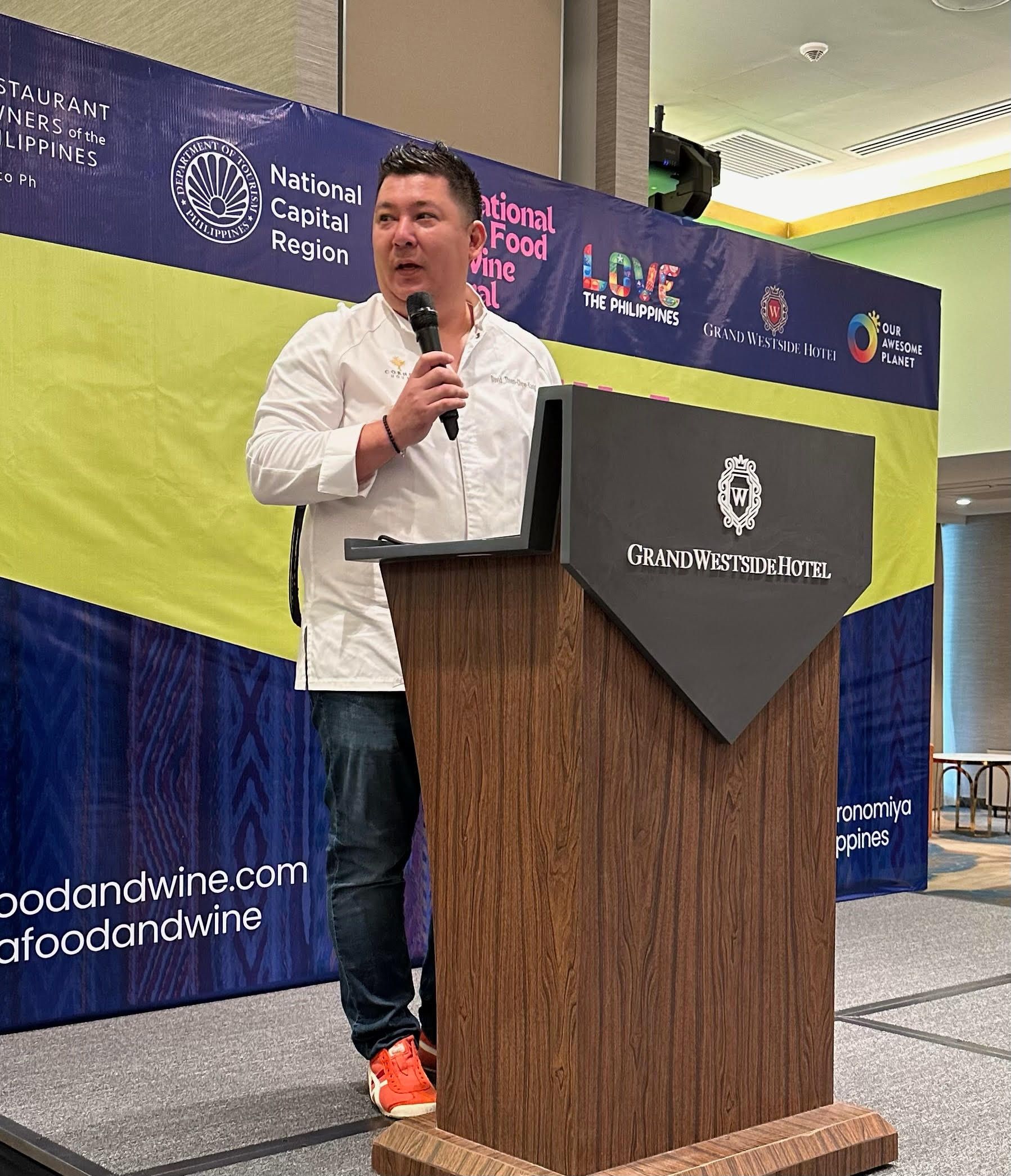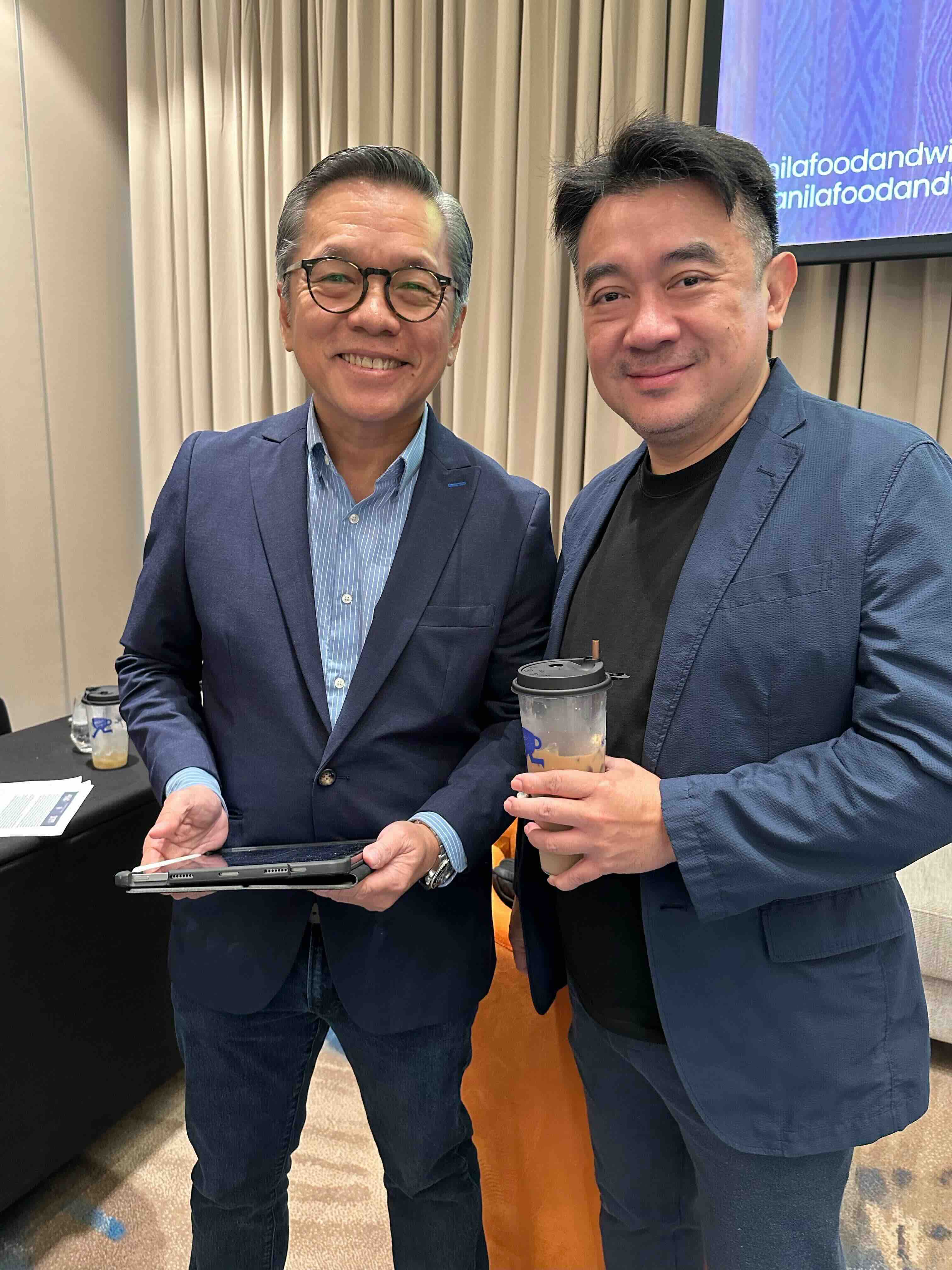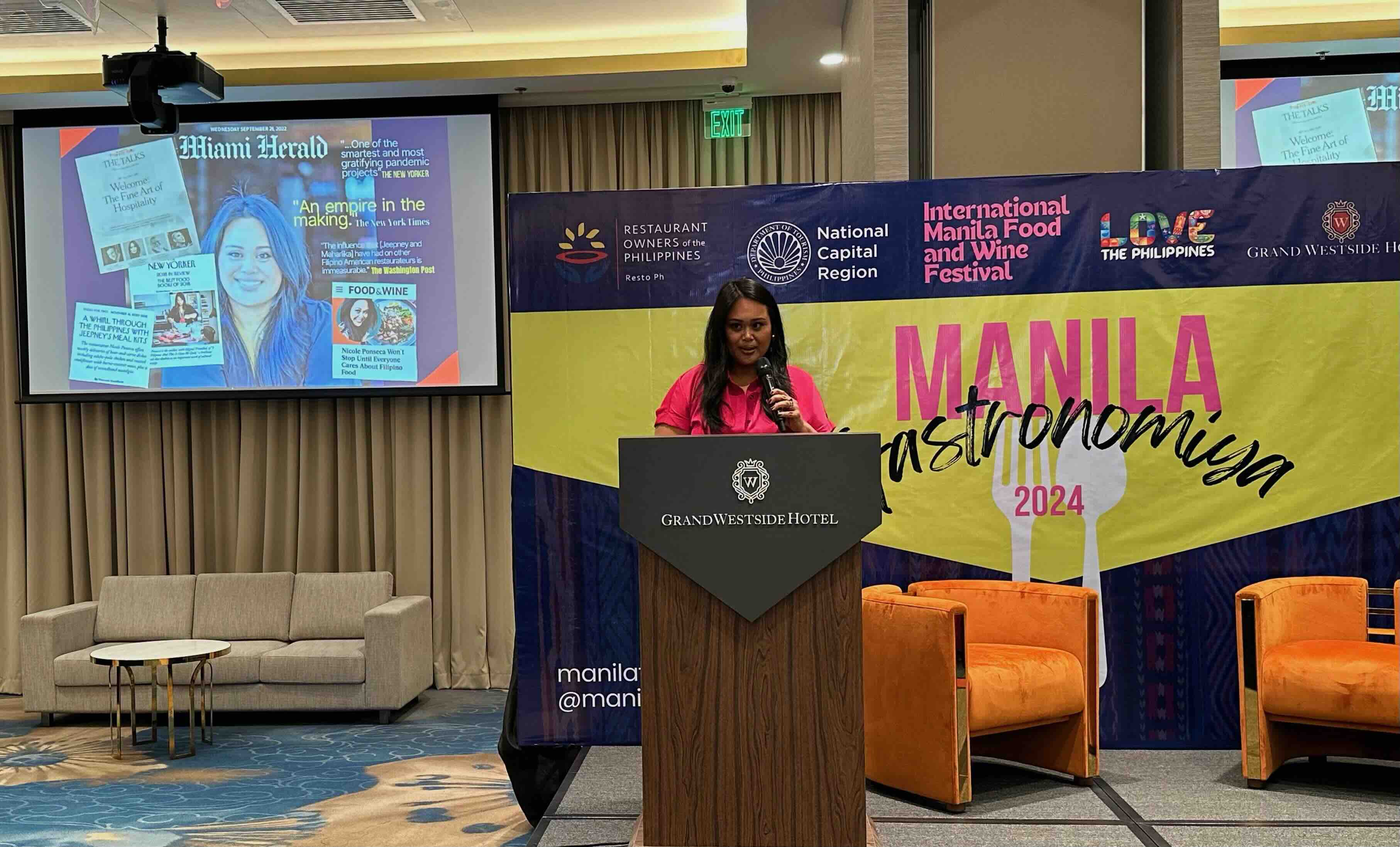
Held at the Grand Westside Hotel, the Manila Gastronomiya 2024 Symposium was organized by the Restaurant Owners of the Philippines (Resto.ph), the DOT-NCR, the International Manila Food & Wine Festival, and Our Awesome Planet.
Entitled “Accelerating Industry Growth through GastroTourism & Doubling the F&B Industry by 2030,” the gathering was a heady examination of where the F&B industry could be headed, an assessment of how realistic the notion of gastronomy tourism for the Philippines could be, and what food trends are on the horizon that could form part of the blueprint for a viable direction. Eric Teng, Resto.ph president, provided the welcome remarks and set the tone for what the conference hoped to achieve and its theme.

The guest of honor keynote address was delivered by Verna Buensuceso, head of tourism development planning at the Department of Tourism. She spoke about various food-related initiatives the DOT has embarked on, including the UN-led Gastronomy Tourism Conference held in Cebu last June, which was hosted by the DOT. Much promise and hope were derived from this conference, leading to much speculation. More on this later.
Chef Robby Goco, founder of the Cyma Group, talked about the growing pains of his restaurant empire. Chef David Thien, now residing in Davao, spoke about his firsthand experiences with the Michelin Guide. Lorna Fabian, who heads leasing at the Araneta Center, showcased their dedication to the food experience. To close the morning session, Nicole Ponseca, the U.S.-based food entrepreneur behind Maharlika and Jeepney in the U.S., shared her insights.

Halal 'gastrotourism' was one of the topics in the afternoon session, but unfortunately, I left by then. Still, a lasting impression was made on how the industry wants to move forward and play a vital role in developing gastronomy tourism, riding the global trend of its growing interest and importance for travelers deciding on destinations.
What I found curious was the obsession with bringing Michelin to the Philippines to cover the local restaurant scene. Buensuceso, Thien, and Ponseca referred to this, and my takeaway is that while they acknowledged it would be nice, I don’t think our infrastructure is ready, nor is it worth the investment at this moment. A smattering of restaurants that would make the grade does not justify the cost and effort to bring the guide here.
Why do I say this? In Thailand, there are seven two-star Michelin establishments, 28 one-star restaurants, and 196 Bib Gourmand accredited eateries. In last year’s pandemic recovery, Thailand welcomed over 25 million visitors. That’s how mature and developed their tourism industry is, and having an established guide for these visitors makes sense.

My other observation is how well established Thai cuisine is globally, with Thai restaurants in all major cities. As Ponseca pointed out, Filipino-themed restaurants account for less than 1% of total registered in the U.S. While there are Filipino restaurants in cities like London and Paris, we haven’t exactly taken over the world — whether in Europe or Asia.
Chef David noted that restaurants shouldn’t operate with Michelin in mind. A restaurant works and succeeds on its own merits. Its growth and appeal must be organic, and if worthy, the Michelins of the world will come.
We should push for gastronomy tourism, but it requires a long-term commitment, and we have a long way to go. Donostia-San Sebastian in Spain, Thailand, Japan, France, and Turkey are well-established centers of gastronomy tourism, and we know how long they’ve enjoyed that recognition.